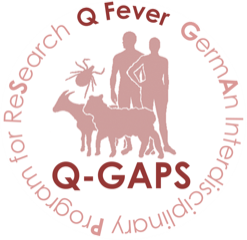Surveillance of Coxiella burnetii Shedding in Three Naturally Infected Dairy Goat Herds after Vaccination, Focusing on Bulk Tank Milk and Dust Swabs
Q fever outbreaks on three dairy goat farms (A–C) were monitored after the animals had been vaccinated with an inactivated Coxiella burnetii phase I vaccine. The antibody response was measured before vaccination by serum samples with two C. burnetii phase-specific ELISAs to characterize the disease status. Shedding was determined by vaginal swabs during three kidding seasons and monthly bulk tank milk (BTM) samples. Dust swabs from one windowsill of each barn and from the milking parlors were collected monthly to evaluate the indoor exposure.
These samples were analyzed by qPCR. The phase-specific serology revealed an acute Q fever infection in herd A, whereas herds B and C had an ongoing and past infection, respectively. In all three herds, vaginal shedders were present during three kidding seasons. In total, 50%, 69%, and 15% of all collected BTM samples were C. burnetii positive in herds A, B, and C, respectively. Barn dust contained C. burnetii DNA in 71%, 45%, and 50% of examined swabs collected from farms A, B, and C, respectively. The largest number of C. burnetii positive samples was obtained from the milking parlor (A: 91%, B: 72%, C: 73%), indicating a high risk for humans to acquire Q fever during milking activity.
Abstract taken from: Benjamin U Bauer, Clara Schoneberg, T Louise Herms, Martin Runge, Martin Ganter, Surveillance of Coxiella burnetii Shedding in Three Naturally Infected Dairy Goat Herds after Vaccination, Focusing on Bulk Tank Milk and Dust Swabs, Vet Sci. 2022 Feb 24;9(3):102. doi: 10.3390/vetsci9030102.


